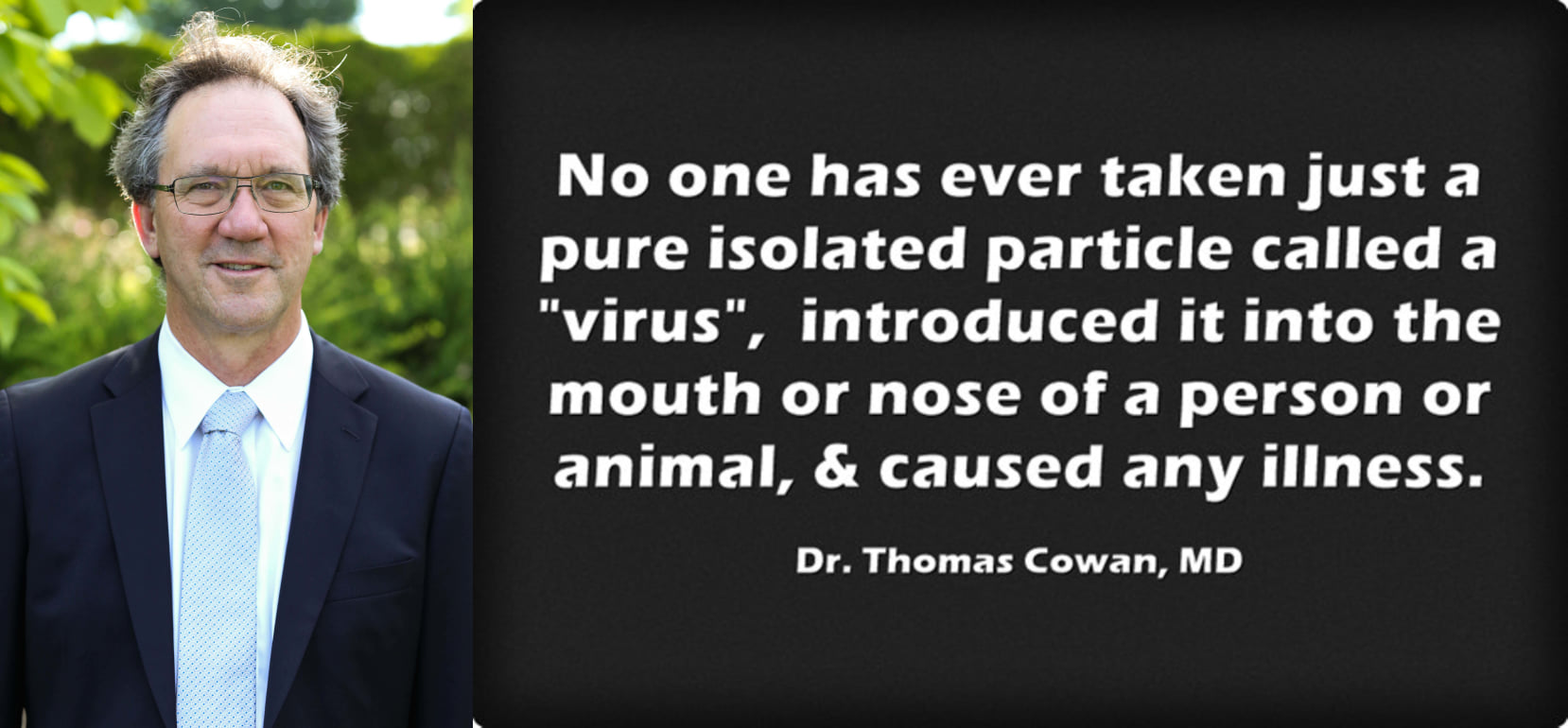If Transmission Through Exhaled Breath Hasn’t Been Proven, All Other Findings Are Irrelevant
People around the world are being led into an increasingly downtrodden and diseaseladen state, not by some viral infection but by wildly unscientific “science.” A study published in the April 2020 Nature magazine that reports that wearing masks can slow the spread of the virus is an example of such deception. As I will show, the authors of this article repeatedly make unsupportable claims, and even present data that cast doubt on their own methodology. The peer reviewers of Nature apparently didn’t catch these obvious contradictions. Let’s look in some detail at the statements and claims (in italics below) in this paper.
“We found that the majority of participants with influenza virus and coronavirus infection did not shed detectable virus in respiratory droplets or aerosols.”
This statement implies that the authors looked for and found detectable virus in some respiratory droplets and aerosols (but only in a minority of their subjects, who were actively sick — itself a surprising finding). It is widely known that the only way to prove the presence of a virus in a sample is to actually see the virus under electron microscopy. There is no mention of having done any electron microscopy on any sample. When they claim they did not detect virus, what they mean is that the surrogate PCR test, which detects fragments of genetic material, was positive. However, nowhere in the medical literature is there conclusive proof that this genetic material originates from any novel virus.
“Another limitation is that we did not confirm the infectivity of coronavirus or rhinovirus detected in exhaled breath.”
The premise of mandating the wearing of masks is that it prevents transmission of disease. Neither this study, nor any other study we’ve seen, proves transmission of any disease through exhaled breath. Amazingly, these authors acknowledge they didn’t even attempt to prove transmission. What’s more amazing is that this study is being used as evidence that wearing masks is an effective method of preventing or lowering the incidence of disease transmission. If transmission through breath can’t be proven, then all other findings in this study are rendered irrelevant.
“After one or more of the candidate respiratory viruses was detected by the viral panel from the nasal swab, all the samples from the same participant (nasal swab, throat swab, respiratory droplets and aerosols) were then tested with RT-PCR specific for the candidate virus(es) for determination of virus concentration in the samples. Infectious influenza virus was identified by viral culture using MDCK cells as described previously, whereas viral culture was not performed for coronavirus and rhinovirus.”
These statements need careful examination and explanation, as they get to the core of the misleading conclusions of the study. First, they state that the method they used to detect the presence of the virus was the RT-PCR test, which, as I said, does not detect virus at all. Rather, it detects genetic material, which they only assume must have come from the virus in question.
Then, they say that with influenza virus, they did attempt to confirm the accuracy of the RT-PCR testing with viral “cultures.” Viral culturing is itself a deceptive process, which I won’t expand on here, but let’s assume that it is a “gold standard” for finding the presence of “live viruses.” In other words, it would be akin to doing a strep culture for someone with a sore throat. If the culture was positive, you have proof that the strep bacteria was present. (Still, the presence of the bacteria doesn’t prove causation.) This positive culture allows you to check the accuracy of the rapid strep test, which detects only pieces of strep or antibodies to strep, so it confirms the validity of your surrogate test.
First, the study authors admit they didn’t do any culturing with the coronavirus, but they did with four of the six participants who tested PCR-positive to influenza virus with droplets collected through the mask. Again, with these four participants, a very small number to be sure, they decided to do an internal check on the accuracy of their PCR testing. What they found is only two people showed a positive culture. Even using their own flawed assumptions about viral culture, this finding demonstrates that the PCR test was falsely positive a whopping 50 percent of the time. To put this in common language, what they “proved” is that the very test they used to determine whether a mask stopped the spread of a coronavirus was no more accurate than a coin flip. Fifty percent of the time, by their own account, a positive test (for influenza virus) is incorrect, and there is no virus present.
In a sane world, this study’s conclusion should have been, “Our data demonstrate that doing PCR or RT-PCR testing is an inaccurate way of detecting virus or the utility of masks to stop the spread of a virus.” They then should have called for larger, carefully controlled studies to determine whether the PCR testing has any utility at all (It doesn’t).
Most lay people and, incredibly, most physicians will have no idea how to read this study and determine its validity. So, people read the abstract or conclusion (or, worse yet, an article’s headline0, and believe what the authors assert. That is the problem. Unless someone actually helps people understand exactly what these studies are showing, and calls out the deceptive nature of much of this whole peer-reviewed science enterprise, most people will continue to be led down a path that could be disastrous personally and societally.
With gratitude for your support, and humility, please let me know whether you have questions.
